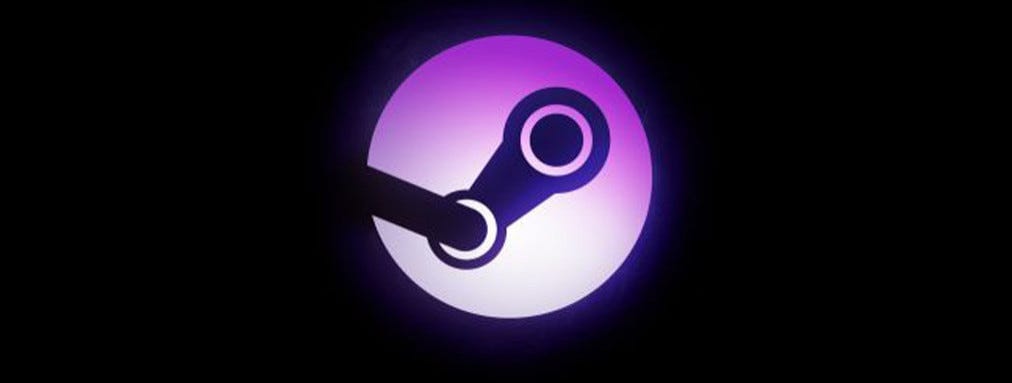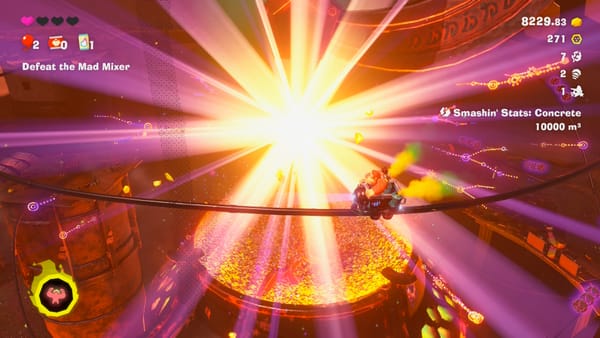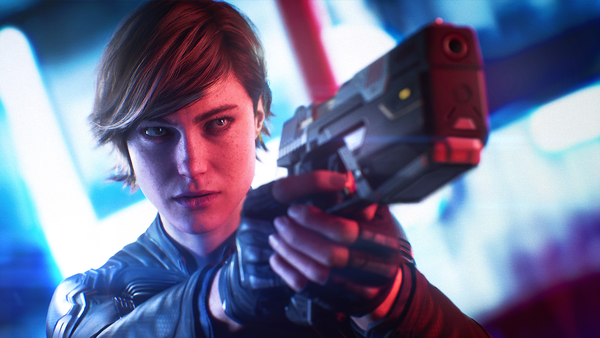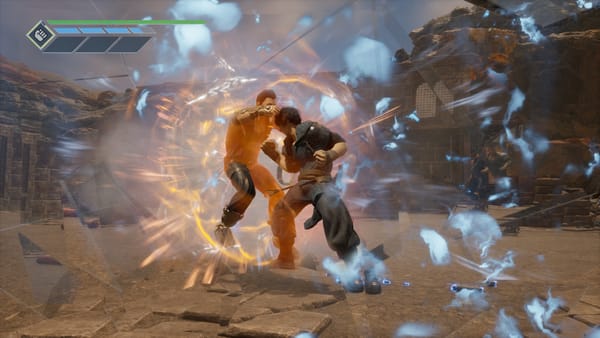#6: Mobile Gabes
Some thoughts — and cautious optimism! — on the rumoured Valve handheld.

In January 2017, I drove up to London one bitterly cold morning to attend the unveiling of Nintendo Switch. The mood was dour. Neither I, nor most of the assembled press I spoke to, could see the point in it. Of the titles playable on the day, Arms certainly caught the eye, but 1-2 Switch (remember that?) was disposable, I’d played dozens of hours of Mario Kart 8 on Wii U already, and Splatoon 2 looked identical to its predecessor. The obvious star of the show, The Legend Of Zelda: Breath Of The Wild, was tucked away at the back of the room, and the demo was exactly the same as the one I’d played three times on Wii U — the start of the game on a 20 minute timer — at E3 eight months prior. Elsewhere were versions of Street Fighter II and Bomberman that would retail for £50.
I vividly remember standing with a group of games-media pals, talking about how the hardware was underpowered and overpriced, and that it had too few games and minimal thirdparty support. For every apparent advantage, it had two or three drawbacks. At one point I said they should have called it the Nintendo But. How we laughed, and how wrong we all were.
It is for this reason that I am prepared to postpone judgement on news of Valve’s Steam-powered handheld console, codenamed SteamPal. References to it were found in a Steam update by SteamDB founder Pavel Djundik, and the device’s existence has since been confirmed by ArsTechnica. Supposedly it runs on Linux, has gamepad controls, “at least one thumb-sized trackpad” and a touchscreen, and can be docked to an external monitor à la Switch. The portable-PC category is increasingly crowded, and still awaiting its first true success. Thus my initial reaction was sceptical in the extreme, but there are plenty of reasons for optimism here too, I think.
We’ll start with the negatives, though, because I am British. I worry, as I did with Switch, about the balance of power and price. For all Valve’s wealth, it doesn’t strike me as the type of company to launch a loss-leading console. Nor does it seem like the sort to skimp on features to keep costs down. Its VR headset, Index, is a beautiful, obviously premium thing, and priced as such. A similarly lavish handheld — high-end in both form and function with decent battery life, which you’d expect its target audience to demand — risks being priced into irrelevancy. I’ve seen it suggested that this may be a streaming device, which would help keep costs down by having the bulk of the processing dealt with in the cloud, but I don’t buy that at all. That wouldn’t be much of a handheld.
I also worry about just how useful I’d find it. Yes, the promise of my Steam library on the go is an alluring one in theory — but how many games would this enable me to play on a plane that I either can’t already play on my Switch or iPad, and would actually be a decent fit for the device’s supposed featureset? The notion of playing something like Counter-Strike: Global Offensive on a small screen with gamepad controls hardly sets the pulse racing. Five years ago, I’d have been all over this. Now, I’m looking at a four-figure investment for another device in a carry-on already full of them, just so I can play the beta branch of Slay The Spire on the move.
But the biggest drawback, I think, is confidence in Valve itself. Can we really trust a company with Valve’s track record to pull this off? Last weekend, rummaging through the many boxes of cables, controllers and assorted crap that litter my home office while looking for a 3DS charger for my eldest, I found a Steam Link. I had completely forgotten it existed. I couldn’t even tell you where my Steam Controller is. And remember Steam Machines? Exactly. Much is made of Valve’s literally free-wheeling structure, with desks on casters letting its highly creative staff move between projects as they see fit. What happens if, 18 months after launch, the entire SteamPal team gets bored and moves on to something else?
And yet! There are a few reasons to think that, this time, things will be different. Gabe Newell has spoken often of his admiration of Nintendo, and particularly the way in which it designs hardware and software in concert. Valve took this approach with Index and Half-Life: Alyx after realising it couldn’t make the game it wanted to make with the hardware that was commercially available at the time. As Jeremy Selan, a member of Valve’s hardware engineering team, told Edge in its Alyx cover story last year: “Merely by iterating in the game space, we couldn’t have made something like Alyx.” That story, incidentally, also reveals that Valve has been aggressively hiring hardware specialists in recent years, and the team is the largest it’s ever been. Maybe this time it’s serious.
This is certainly a different kind of Valve to the one that gave us Steam Machines. We can think of the 2010s as Valve’s ‘no, you do it’ era: it outsourced game approvals to the community through Steam Greenlight; likewise keybindings to fans with Steam Controller, and hardware design to external manufacturers with Steam Machines. It tried to apply the ethos behind Steam Workshop across its entire business, and it didn’t really work. The Alyx/Index axis shows it has moved on, perhaps having realised it does its best work when it works alone.
Lots to think about, then — and whatever the potential drawbacks, I can’t not be excited about the prospect of new hardware. In fact, I just had another look through my Steam library. If this means I can play a DLSS-enhanced OutRun 2006 on the flight to E3 next year then I’m all in, and hang the expense.
MORE!
- Having seemingly forgotten all about Xperia Play — so had we, in fairness, until just now — Sony is planning to take another run at mobile gaming, according to PlayStation boss Jim Ryan.
- Frequently misunderstood Chinese media juggernaut (cough) Tencent has taken a 3.8% stake in Control developer Remedy.
- Two excellent retrospectives from yesterday: Kirk McKeand tells the story of Alpha Protocol for The Gamer, and over at VG247 Jeremy Peel tells of the cancelled Driver game that helped birth Watch Dogs. The latter is particularly insightful for showing how cancelled games never really die, but live on in whatever comes after them.
- Biomutant’s lukewarm reception has sparked another tedious debate about pricing, expectations, game reviews and all that guff. I hate stuff like this because it drives a wedge between groups — players, press and developers — that ultimately all want the same thing.
See you tomorrow!





